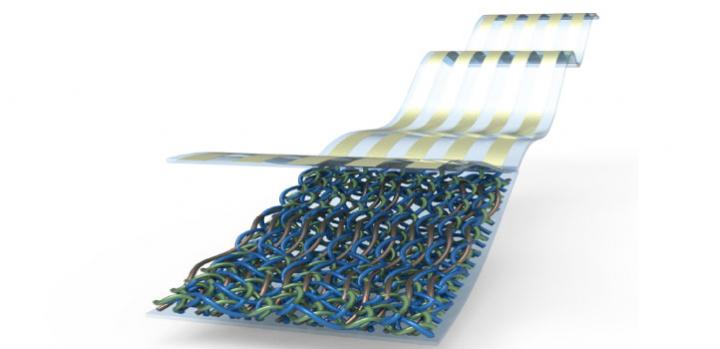Impurities boost performance of organic solar cells

Adding diquat, a known herbicide, as a dopant enhances the conversion efficiency of high-performance organic solar cells.
Credit: © 2021 Yuanbao Lin
Sunlight offers a potential solution in the search for an energy source that does not harm the planet, but this depends on finding a way to efficiently turn electromagnetic energy into electricity. Researchers from KAUST have shown how a known herbicide can improve this conversion in organic devices.
While solar cells have traditionally been made from inorganic materials such as silicon, organic materials are starting to break through as an alternative because they are light, flexible and relatively inexpensive to make, even offering the possibility for printable manufacture.
For organic photovoltaics to become a realistic replacement for fossil fuels, they must improve their efficiency when converting the fraction of incident solar energy to electrical energy. Key to achieving this is choosing the right combination of materials.
Ph.D. student Yuanbao Lin and Thomas Anthopoulos have now achieved this by developing “an efficient molecular dopant to improve the performance and stability of organic solar cells,” according to Lin.
Most photovoltaic devices have two important elements: an n-type region and a p-region, so called because each region has a net negative and positive electric charge, respectively. These charges can be achieved by adding impurities to the semiconductor. An impurity that creates an n-type material is known as a donor, while an acceptor impurity makes a p-type material.
Lin, Anthopoulos and their team used diquat (C12H12Br2N2) as a molecular donor dopant to enhance the conversion efficiency of high-performance organic solar cells.
The dopant was added to two organic material systems that have previously shown excellent photovoltaic performance. In one case, the power conversion efficiency was improved from 16.7 percent to 17.4 percent, while they were able to attain a maximum efficiency of 18.3 percent in the other. These improvements were possible because the molecular diquat dopant increased both the materials’ optical absorption and the lifetime of the electrical charges when light was absorbed.
Like many organic n-type dopants, diquat is reactive in an ambient atmosphere; its lack of stability has prevented its use as a molecular dopant so far. However, the KAUST team were able to develop a process that stably created neutral diquat by electrochemically reducing charged diquat, which is stable in air.
This ability makes diquat a promising choice for the next generation of organic solar cells. “The predicted maximum efficiency of the organic solar cell is around 20 percent,” explains Lin. “We will try our best to reach this.”
All latest news from the category: Power and Electrical Engineering
This topic covers issues related to energy generation, conversion, transportation and consumption and how the industry is addressing the challenge of energy efficiency in general.
innovations-report provides in-depth and informative reports and articles on subjects ranging from wind energy, fuel cell technology, solar energy, geothermal energy, petroleum, gas, nuclear engineering, alternative energy and energy efficiency to fusion, hydrogen and superconductor technologies.
Newest articles

High-energy-density aqueous battery based on halogen multi-electron transfer
Traditional non-aqueous lithium-ion batteries have a high energy density, but their safety is compromised due to the flammable organic electrolytes they utilize. Aqueous batteries use water as the solvent for…

First-ever combined heart pump and pig kidney transplant
…gives new hope to patient with terminal illness. Surgeons at NYU Langone Health performed the first-ever combined mechanical heart pump and gene-edited pig kidney transplant surgery in a 54-year-old woman…

Biophysics: Testing how well biomarkers work
LMU researchers have developed a method to determine how reliably target proteins can be labeled using super-resolution fluorescence microscopy. Modern microscopy techniques make it possible to examine the inner workings…





















